TANIS (SAN EL-HAGAR): THE LOST GOLDEN CITY DURING THE AGES
(ARCHAEOLOGICAL AND HISTORICAL STUDIES)
Sabry A. El Azazy
Ph.D. in Tourist Guidance, Faculty of Tourism and Hotel Management Suez Canal University, Egypt
Lecturer of Tourist Guidance and Ancient Egyptian Civilization, Tourist Guidance Department, Egyptian Higher Institute for Tourism and Hotel Management, Ministry of Higher Education, Egypt
Abstract:
Tanis (San El-Hagar) considers one of the most important archeological sites in Egypt. It is located in Sharkia Governorate, on the North-Eastern side of the Nile Delta. The site played an important role during ancient times as the Eastern Gateway of Egypt, used as a strategic location for the commercial exchanges and a defensive station on the Eastern border of Egypt. The city was the capital of Egypt during the 21st-22nd Dynasties. One of the most important discoveries at Tanis is the grand temple and the royal tombs that dated back to the kings of the 21st-22nd Dynasties. The archaeological site included monumental remains, numerous significant statues, and other monumental objects. The temple is located in the center of the monumental area; the temple's main entrance is located on the north side, and the front pylon could be accessed by the northern gateway. The location was looking over the Tanitic Branch of the Nile that is now dried. Tanis was called “Thebes of the North” due to its fantastic monuments and significant constructions. The site needs many scientific studies and more further excavations to be developed. This study threw the light on the region to be placed on Egypt's Tourism Map and included in the Local and International Tourism Programs. Additionally, we invite people from all over the world to visit the city and see Egypt's ancient history and great Civilization.
Keywords: Egypt, Tanis, History, Civilization
- Introduction:
Tanis, the current (San El Hagar), is located to the southeast of Cairo, to the North of Port Said, to the east of Ismailia, and the west of Qaluibia. The city had a strategic location during the historical ages, and the site was close to the ancient place of Avaris (Tell El Dabaa) and Tell Basta. Its unique location enabled it to become a flourishing city during ancient times, but the site had later abandoned due to drying the river and overcoming the silted plains on the site. Additionally, the political changes led disappeared the location, and the city had been lost (Lost City of Tanis, 2021). The place was still a mystery until 1939 when the archeologist P. Montet discovered the location of the royal cemetery; he found the untouched tomb of king Psusennes I that no less important than the tomb of King Tutankhamun in Luxor. The treasures of Tanis did not take their international fame due to starting the Second World War (Treasures of Tanis, 2021).
The city was the capital of the 19th Lower Egyptian Nome. The area was the capital of Egypt during the 21-22 Dynasties. The location had situated on the Tanite Branch of The Nile (Rowe, 1941). Tanis became the political capital located in the North of Egypt, while Thebes was the religious capital situated in the South of Egypt. The site played an essential part during ancient times as a strategic geographic location on the north-eastern border of Egypt. The site needs more further excavation to reveal the incredible secrets about the golden lost city. The place had identified by the French scientific expedition who came with Napoleon to Egypt in 1798. They conducted an introductory study about the site, and they recorded the topographical plan and the site layout in the book the Description of Egypt (MFFT, 1991).
The archaeological site of Tanis had ruined due to the earthquake that occurred during the Byzantine period. The archaeological remains, fallen statues, broken obelisks of Ramesses II, and other monumental blocks are scattered on the location's surface (Obelisks in Tanis, 2021). The ruined temple is located in the central monumental area. It was surrounded by a mud-bricks enclosure wall that had disappeared. The temple's main entrance is situated on the north side; the temple fronted by the front pylon of Sheshonq III, and the northern gateway could enter it. Additionally, two water wells had discovered in the temple; they were used as Nilometers, and they were one of the main resources in the location. The Sacred Lake was located on the northern side of the main temple, while the small temples of Mut and Khonsu situated on the southeastern corner of the temple of Amun (Tanis-San El Hagar, 2021).
- Methodology:
The researcher depended on the Site Tours, Interviews, Observations, References, Internet Websites, Publications, and Recent studies related to the research subject. The researcher worked as a Tourism Researcher and Lecturer of Tourist Guidance and ancient Egyptian Civilization; therefore, had the opportunity to attend a vast number of meetings, conferences, and events that focused on the research subject. Additionally, by being an employee of the organization, the researcher had the privilege to communicate with archeologists, professionals, executives, and specialists working in the same field. The main reason for choosing these methods was that the researcher was an employee in the State of Sharkia; then had the opportunity to visit all archaeological sites and cultural-historic locations. This research is throwing light on the importance of Sharkia region's cultural heritage and historical locations, archeological sites that consider one of the most important resources supporting the National Income and Local Society. The main purpose of the research was gaining information in order to develop theoretical research on how to effectively benefit out of those historical sights both economically and culturally. The researcher is looking forward to presenting further studies in a field related to archaeological and historical studies using previous experience. This study provides the ability to achieve the main goals and objectives successfully.
- The Historical importance of Tanis during the Ages:
Tanis considers one of the most important archaeological sites in the Eastern Delta. The city was the capital of the 19th Lower Egyptian Province. The site was the capital of Egypt during the 21-22 Dynasties. King Smendes was the 1st king of the 21st Dynasty, and he founded his royal residence at the site located on the Tanite Branch of The River Nile. The site had been dated to different historical ages from the Old Kingdom until the end of the Greaco-Roman period. It was found remains in the location dated back to the reign of King Pepi I from the Old Kingdom (2282-2117 BC). The Asian tribes came later to the Eastern Nile Delta during the Middle Kingdom (1985-1650 BC), and they lived in it. The Egyptians later success in expelling them out of the borders of Egypt (Rowe, 1941).
Numerous monuments had been found at the site bearing the names of the kings Amenemhat I, Amenemhat II, Sesostris I. The city's walls had been built by Senosurt I, from stone blocks inscribed by his name. During that period, Hyksos settled in the Eastern Nile Delta, where the site was called Avaris (het-wârt) or the house of the thigh. It was believed that the thigh of Osiris had been buried in it. The Hyksos (1650-1550 BC) used that area as a protection station on the eastern border of Egypt, and they also used it as an exile for the rebels away from the capital Memphis. The great king Ahmose success in defeating the Hyksos and expelling them out of Egypt; he founded the New Kingdom, and he became the 1st king of the 18th Dynasty. Ramsess II came later to the site (1295-1186 BC), and he founded his northern royal residence at Avaris close to the location of Tanis. The king's monuments were discovered at Tanis (Rowe, 1941). However, Ramesses II set up his residence city (Pi-Ramesses) close to the city of Tanis, which was an important city during the reign of Ramesses II. Ramesses II's father Seti I visited the city in 1330 BC, and his grandfather (Ramesses I) also visited the city when he was one of the military Generals in the Army of Hourmoheb (Egypt Travel Experts, 2021).
After that period, Egypt had witnessed political conflicts making the Egyptian Authority unable to control the vast land of Egypt. Therefore, the foreign governors came to Egypt, and they settled in the Eastern Delta. Egypt later had witnessed coming the rulers from Libya, Ethiopia, Assyria, and Persia during the 3rd Intermediate Period (1069-664 BC). Egypt divided into two authorities; the political authority in the North governed by the foreign rulers, and the religious authority in the South governed by the priests. Tanis was flourished city during the period of the 21-22 Dynasties (Taylor, 2000).
The Libyan rulers settled on the western border of Egypt from the New Kingdom; many military campaigns had been done against them by the Egyptian kings. During the 20th Dynasty, the Libyans had been used as mercenaries; they came in huge numbers, and they settled in Eastern Delta. After the death of Rameses XI, they succeeded in managing the authority, and they held the throne of Egypt. Smendes declared himself as the king of Egypt (1069-1043 BC); he founded the 21st Dynasty, and his capital was Tanis. He was followed by king Posusennes I, his tomb was discovered at the site, and his unique monuments moved to the Egyptian Museum in Cairo. Additionally, Tanis was still the capital of Egypt during the 22nd Dynasty that had founded by Sheshonk I (945-924 BC). According to the inscriptions of Karnak, he was interested in external relations and foreign policy with the other countries, as well as he led his campaign to Palestine. Tanis later had been left, and the capital moved to Tell Basta during the 23-24 Dynasties. After that the king Taharka came to the site; he built in it, and he left his monuments there. Then Tanis lost its importance as the capital of Egypt, and it became just a protection station and trade center (Abd-Elfattah, ed).
The royal tombs had constructed between the period (1039-991 BC), one of which belonged to Amenemope, who ruled Egypt from 993 to 984 BC. Moreover, some valuable sarcophaguses found in these tombs, such as; the coffin of Shoshenq III, who ruled Egypt from 825 to 733 BC, and the coffin of Taklot II, who ruled Egypt from 850 to 825 BC (Egypt Travel Experts, 2021). It was found at the site some monumental blocks dated to the 25th Dynasty indicating that king Tahatqa stayed at Tanis, and he made it his northern residence. Some of these stone blocks were reused in building the Sacred Lake. During the 26th Dynasty, Psamtik built his building at Tanis, but this building was later destroyed, and its remains had been used in building the other constructions at the site (Tanis-San El Hagar, 2021). Tanis regained its position during the reign of Ptolemy III. A copy of the Canopus Decree has been found indicating the site of Tanis. The city had been neglected and abandoned due to the political changes, flooding, and environmental conditions during the later periods (Budge, 2011).
- The Ancient Name of the City and its Geographical Location:
Tanis (San El-Hagar) considers one of the most important archeological sites in Sharkia Governorate. Its ancient Egyptian name was "Djanet", its Greek name was Tanis, and it is now called San El-Hagar (Harcourt, 2019). The city is also called (Suan – the biblical city of Zoan) and San El Hagar by the Arabs taking its modern name (Smith, 1854). Its ancient name as Djanet related to catch the fish, indicating to the site was an important fishing center (Rowe, 1941). The Modern name is San El Hagar because it included many blocks and stones, meaning in Arabic (Hagar), and then it is called San El Hagar (Egypt Travel Experts, 2021).
Tanis is located in the North-Eastern corner of the Nile Delta. The city was looking over the Tanitic Branch of the Nile that is now dried, but there is now a small branch known as "Bahr Saft" ending at the Lake of Manzalla (Thames & Hudson. 2014). Auguste Mariette came to the site; he wrongly believed that Tanis was Avaris (the capital of Hyksos), and the location of the residence city of Ramesses II (Pi-Ramesses) instead of Tell El-Dabaa next to the site. The city was replaced by Pi-Ramesses (Modern Qantir) as the royal residence during the 21st-22nd Dynasties (Bard, Kathryn A., 1999).
The location played an essential role during ancient times as a strategic geographic location on the north-eastern border of Egypt. The city was abandoned after the 6th century due to the inundation of Manzala Lake and the area covered by water and swamps. The archaeological site covered by soil and various remains; part of the location became agricultural land, and the other was used for the modern buildings on it. (MFFT, 1991). Tanis is located on the North-eastern Delta of the Great River Nile. The city was looking over the Tanitic Branch of the Nile that is now dried. However, the city was the capital of Egypt during the 21st-22nd Dynasties; it later became a small city. The city's harbor had been abandoned, and the site was just a small location on the North-eastern border of Egypt (Tanis-San El Hagar, 2021).
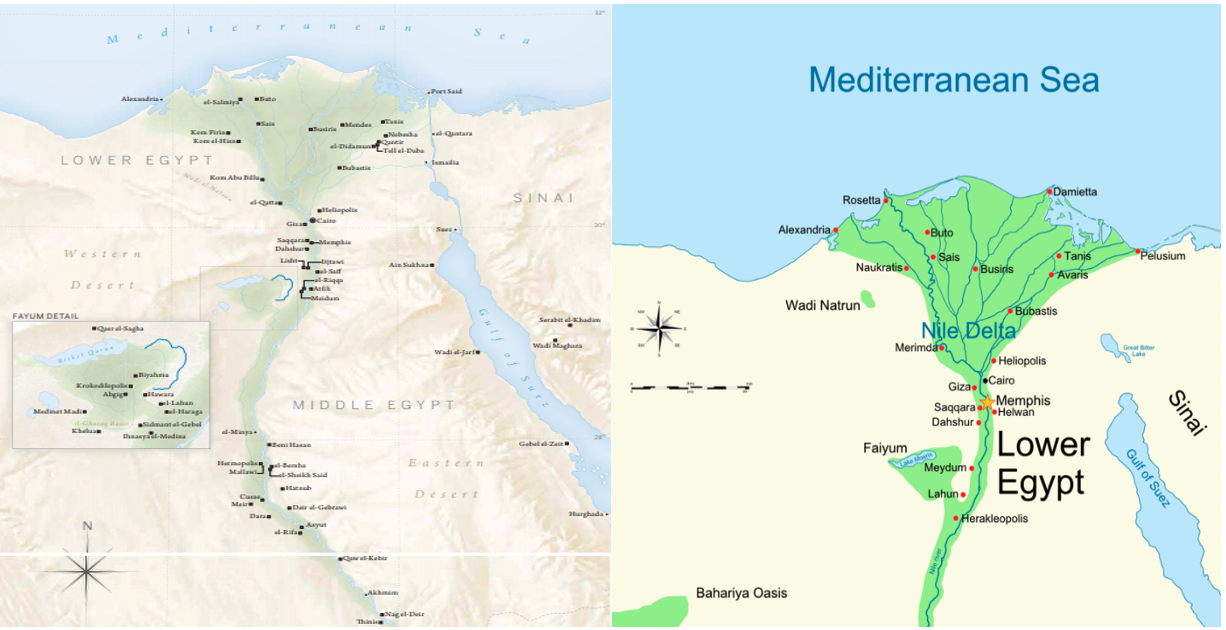
Fig. 1 The Location of Tanis (San El Hagar) on the Eastern Nile Delta and the ancient branches of the River Nile. https://doi.org/10.1371/journal.pone.0180770.g00
- The History of the Excavation Work at the Site:
Napoleon Bonaparte came to Egypt in (1798-1801); he accompanied many archaeologists and scientists. They surveyed the site, and they presented a scientific study about the area. They collected statues and other monuments, sending them to different museums around the world (Tanis-San El Hagar, 2021). The site was excavated by J.Rifaud in 1825. He discovered the four giant sphinxes and other monumental artifacts that moved to various places in the world. (Verner, 2013). Auguste Mariette had excavated in the site between (1860- 1864). He excavated in the central area, including the great temple of Amun. He discovered many significant monuments and unique royal statues. He wrongly believed that Tanis was the city of Ramsess II that it is located close to the site. He said that Tanis was the capital of Hyksos, and the place was the proper location of the residence city of Ramesses II (Pi-Ramesses) instead of the site of Tell El-Dabaa. He discovered the historical importance of the region, and he believed un-correctly that site was the location of the ancient city "Avaris" (Verner, 2013).
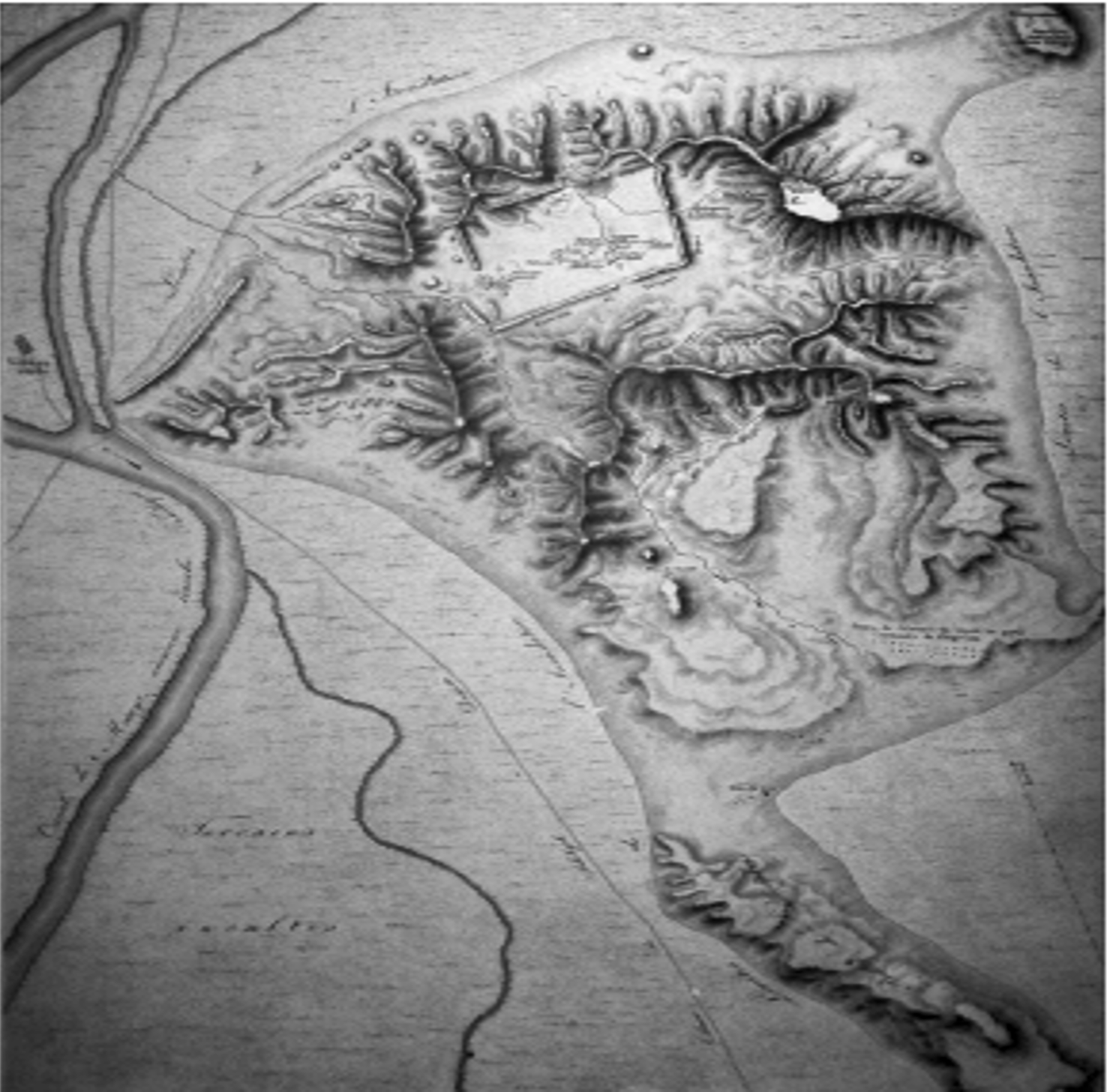
Fig. 2 Map showing the location of Tanis, Eastern Delta, 1798. (Draw by: Napoleon's expedition,scholar P.Jacotin,from exhibition " Galeries Nationales d'Exposition du Grand Palais",1987).
Additionally, Mariette discovered the "Famous Stela of the Four Hundred Years", as well as numerous significant statues. Flinders Petrie was later excavated in the site between (1883-1886). He made the layout plan of the temple. He also discovered a significant papyrus dated back to the Roman period in the British Museum in London (Tanis-San El Hagar, 2021). Pierre Montet came to the site in 1929. After ten years, Montet discovered the royal tombs in 1939. The cemetery dated back to the 21st-22nd Dynasties. A golden amulet and canopic jars found belonged to Osorkon in the area, and then he found the first royal tomb (NRT-I) next to the southwestern corner of the temple. He entered the tomb of Osorkon II from the roof, but he found that this tomb looted (San El Hagar- Tanis, 2021).
However, Pierre Montet excavated in the site between (1921-1951). He discovered the area of the royal tombs in 1939 that dated back to the 21st-22nd Dynasties. These tombs dedicated to Psusennes I (1039-991 BC), Amenemope (993-984 BC), Osorkon II (874-850 BC), and Sheshinq III (825-733 BC). The owners of the other two tombs remain unknown til now. He discovered the royal sarcophagus of Sheshonq III and other valuable monumental objects (Shaw, 2003). The discovery of the royal cemetery at Tanis equaled the great discovery of Tutankhamun at Thebes; it included gold and silver pieces, golden masks, silver coffins, wooden sarcophagi inlaid with gold and precious stones. Additionally, many valuable bracelets, necklaces, amulets, pectorals, pendants, and other various accessories. The excavation work started again after the 2nd World War between 1947-1951 (MFFT, 1991).
However, the site had excavated by Auguste Mariette between (1883-1886); the site was excavated by Pierre Montet between (1929-1939). The site was later excavated by many different missions. The scientific missions started the excavations with the cooperation of the French Missions between (1965-1985) under the supervision of Jean Yoyotte, who was followed by P.H. Brissaud (San El Hagar- Tanis, 2021). J. Yoyotte excavated in the site between (1965-1985). He worked in the location of Scared Lake and the temple of Khonsu. He also organized the scientific archives prepared by P. Montet (SFFT, ed). Additionally, the French Society of Excavation at Tanis started the excavation work from 1985 to 2013 (SFFT, 2013).
- The main Temple of Tanis:
One of the most important discoveries at Tanis is the great temple. It dedicated to Amun (the main deity of the region), and other temples were found at the site related to Mut (Amun's wife), and his child Khonsu. They formed the Triad of Tanis, exactly the same as the Triad of Thebes. Therefore, Tanis was called Thebes of the North due to its great monuments and significant ancient constructions. A large mud-bricks enclosure wall surrounded the temple dated back to the reign of Psusennes; Smedes's successor during the 21st Dynasty. It was built from blocks that had been brought from the buildings of Pi-Ramesses next to it. The enclosure wall surrounding the temple where it was built in a depression area about eight meters above the flood plain. The wall was about 430 m long, 370 m wide, 10 m high, and 15 m in thickness. It was discovered essential inscriptions in the temple related to Psusennes I and Pinudjem I showing the relationships between Tanis in the North and Thebes in the South during that period. The temple dated back to the 21st-22nd Dynasties; however, the scared lake was later constructed by Nectanebo I (380-362 BC), who used some stone blocks related to the buildings of Sheshonq and Psamtek. (Bossone, Andrew, 2009).
The main temple had been built from blocks brought from the ancient city of (Pi-Ramesses) and the other nearby archaeological sites. It was expected that there was a processional way surrounded by many obelisks related to Ramesses II, leading to a large enclosure wall built by Nectanebo II and Ptolemy II. However, Psusennes I had initially started to build the earlier mud-brick wall, and he also began to construct the temple of Amun in the site. Multiple buildings had been built in the temple by many successive kings such as; Siamun and Osorkon III. They added new pylons and courts to the temple. Shoshenq III made a large granite gateway by reusing the monumental blocks from the other buildings.
Additionally, It was discovered columns taking the form of a palm tree; they about 11 m high, and other columns taking the form of papyrus. It was discovered two colossal sphinxes of Amenemhet II and other great monuments in the court behind the second pylon. Beyond the temple's façade, a pillared hall was discovered surrounded by granite papyrus columns dated back to the Middle Kingdom, as well as a small chapel was found at the rear of the temple included ten columns taking the form of palm tree dated back to the Old Kingdom. Many different blocks scattered on the site had a colossal statue of Rameses II and other monuments dated back to the Ramesside Period. Nectanebo I constructed the temple of Khonsu-Neferhotep on the northern side of the temple and the sacred lake close to it by using some blocks that belonged to Shoshenq V and Psamtik. Osorkon II built a small temple on the east side. Nectanebo II and Ptolemy II built the temple of Horus in the southeastern corner of the temple (San el-Hagar- Tanis, 2021).
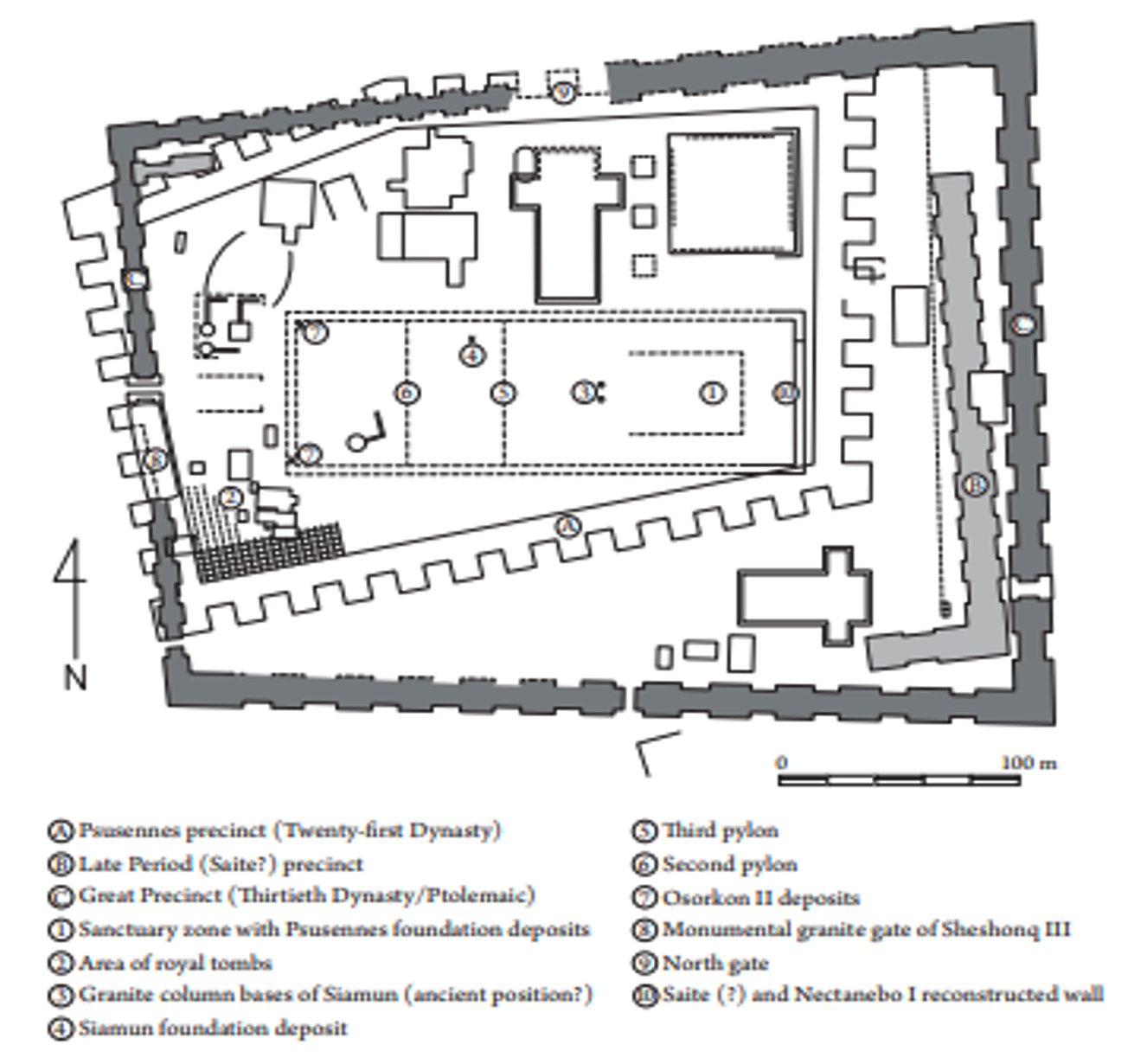
Fig. 3 The Layout Plan of the Amun Temple at Tanis. Marsha Hill, Later Life of Middle Kingdom Monuments Interrogating Tanis. The Metropolitan Museum of Art, New York Distributed by Yale University Press, New Haven and London.
However, smaller temples dedicated to Mut and Khonsu discovered in the southwestern corner of the main temple; a small temple was also constructed by Siamun (984-965 BC) dedicated to worshiping the Asiatic Goddess (Astarte). Osorkon II also used many of Amun temple's blocks to set up his eastern temple. Sheshonq III constructed the main gate that is fronted by a colossal statue of Ramesses II. During the 30th Dynasty, Necktanebo I built a huge mud-bricks wall surrounding the temple, and he also founded the temple of Khonsu on the northern side of Amun temple next to the main gate. However, the temple of Horus had constructed in the 30th Dynasty, Ptolemy II built a small chapel built from the mud-bricks, and Ptolemy IV also made a small temple in the southwestern corner of Amun temple. The temple was surrounded by a huge enclosure wall built from the mud-bricks and he main entrance located in the north side. It was discovered two water wells in the center of the temple; had been used as Nilometers, and they were one of the main resources of the water in the temple. The Sacred Lake was located on the northern side of the main temple. (Tanis-San El Hagar, 2021).
- The Royal Cemetery of Tanis:
Tanis was the royal governmental residence during the beginning of the Late Period. The royal cemetery of Tanis was discovered at the southern-eastern part of the temple that it dated back to the 21st-22nd Dynasties. However, the tombs had been discovered by Montet in 1939, some other tombs still unknown until now such as; the tombs of Smendes, Amenemnisu, Shoshenq I, and Osorkon I. The tomb of Osorkon II (NRT-I) was initially discovered at the site. Osorkon II was buried in a great granite sarcophagus, while the lid carved from a monumental block dated back to the Ramesside period. The tomb was looted except for some remains of the hawk-headed coffin and canopic jars related to this king. The king's young son (Harnakht) who was the high priest of Amun at Tanis, had died before his father, and he buried in the tombs of Osorkon II. Takelot I was buried in a significant sarcophagus dated back to the middle kingdom in a small chamber in this tomb, with a few burials remains related to Osorkon I, as well as a small chamber included burial remains dedicated for Shoshenq III. Another room was found might be set up for Shoshenq V; it was found some of his canopic remains in this tomb (Tanis-San El Hagar, 2021).
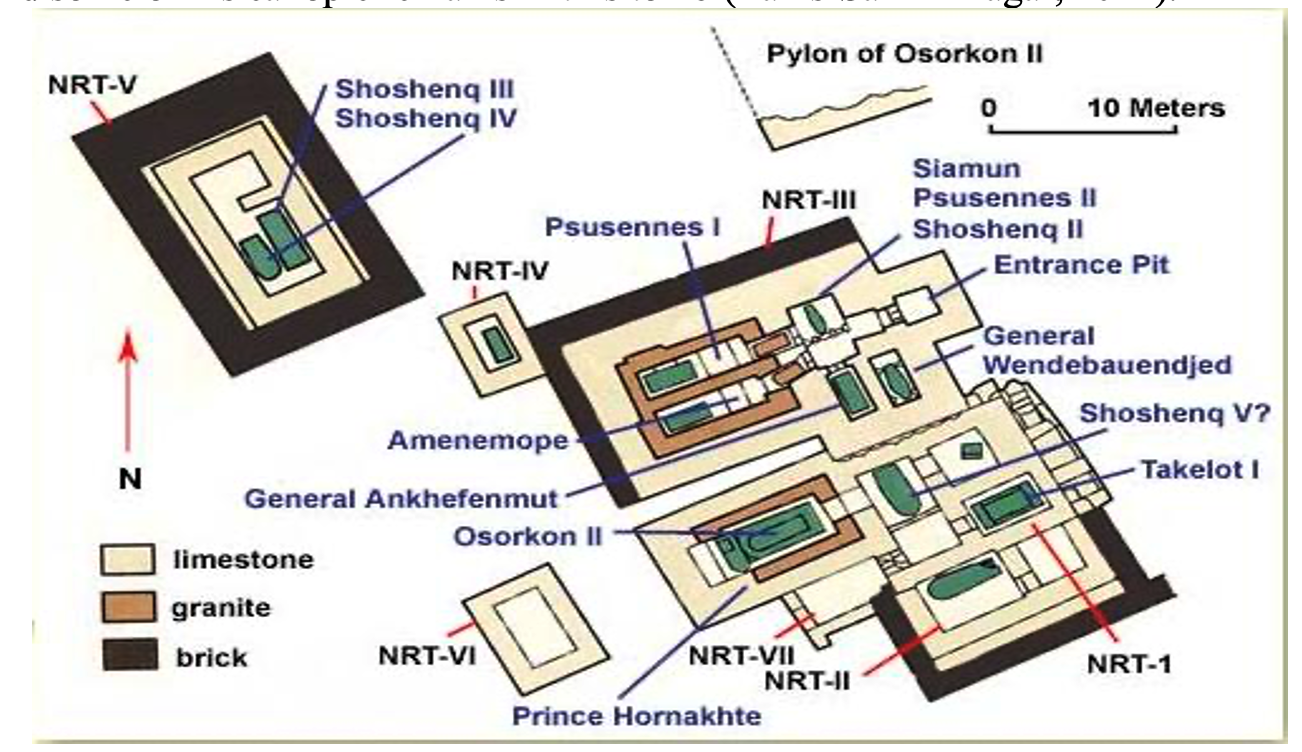
Fig. 4 Plan of the Royal Tombs at Tanis
http://www.touregypt.net/featurestories/tanistombs.htm
The tomb NRT-I belonged to Osorkon II; he probably took it from Smendes for himself and his father Takelot I. The tomb NRT-II was built beside the tomb of Osorkon II. This tomb was un-identified by Montet, but it thought that the tomb related to king Pimay (22nd Dynasty), and this king was identified by his canopic remains. The Tomb NRT-III was discovered by Montet in 1939. This tomb dedicated to king Psusennes I (21st Dynasty). The tomb consists of five rooms included the silver coffin of falcon-headed related to Shoshenq II, and reburied mummies belonged to the kings Siamun and Psusennes II. The burial chamber of Psusennes I was un-touchy discovered behind a decorated wall. In the burial chamber, it was found the king's canopic jars, shabtis, and other monumental funeral objects. The tomb NRT-IV was originally dedicated to king Amenemope which included a significant sarcophagus recorded with the king's name. This sarcophagus was found empty, but the king's body and his funerary stuff transported to the tomb NRT-III. The tomb NRT-V was built for king Shoshenq III; this tomb might be built during his reign, and the king's funerary collections covered with a mud-brick mastaba. There are two unidentified tombs (San el-Hagar- Tanis, 2021).
The tombs of NRT-I and NRT-III are distinguished among the other tombs of the cemetery of Tanis. These tombs might be modified; both of these tombs included granite burial chambers with main limestone buildings, while the other tombs were simply built in both layout plan and design. Therefore, the tomb NRT-I may be built for Smendes, due to one of his canopic jars found close to this tomb. There are no decorations related to this king in the tomb NRT-I, and the tombs NRT-II, IV, VI, and VII, had been left without any decorations. Osorkon II added various decorations to his tomb, he modified the eastern side of the burial chamber, and he made two sarcophaguses, one for him and the other for his father Takelot I, in this tomb. Moreover, he dismantled the west wall of the burial chamber, and he also made a new sarcophagus for his son (Shoshenq V). However, king Amenemnisu had no tomb in the cemetery of Tanis; he may be buried in the tomb NRT-VI where it found his title in his cartouche called him as the "Ruler of Thebes", or he might be buried at Thebes in Upper Egypt. Psusennes I and Amenemope have tombs at Tanis, and the mummy of Amenemope was placed in the tomb NRT-III. The tomb of Psusennes I included 5 chambers, and the silver falcon-headed coffin of Shoshenq II was found in it. It was discovered the remains of two mummies and small funerary statues concerning Siamun and Psusennes II in this tomb. The burial chamber of Psusennes I discovered untouched behind a decorated wall. He was buried in a granite sarcophagus that belonged to Merenptah; the son of Ramesses II (19th Dynasty). In this sarcophagus was found a silver coffin, a gold mummy-board, and golden mask covering the king's face Psusennes I (Tanis-San El Hagar, 2021).
Additionally, it was discovered some of the king's canopic jars, small funerary statues, and other monumental objects around the sarcophagus. Beside the king's chamber, Psusennes I set up another chamber for his mother queen Mutnodjmet, but her sarcophagus was taken by the king Amenemope. Two rooms were discovered; one of them included an empty coffin made for General Ankhefenmut, and the other for General Wendjebauendjed. However, Amenemope was buried in the tomb of Psusennes I; he prepared his own tomb NRT-IV provided with a significant sarcophagus. Shoshenq III built his tomb NRT-V, and he was buried in a great sarcophagus related to the 13th Dynasty. The sarcophagus of Shoshenq IV was found beside that of his predecessor in the tomb NRT-V. The other two tombs NRT-VI and NRT-VII had been simply designed. There is no exactly confirmed information that the first kings of the 21st Dynasty, such as; Shoshenq I, and Osorkon I had been here buried, due to the canopic chest of Shoshenq I is now in Berlin, and these tombs very simply do not rise to be prepared for such those great kings. The coffin of Shoshenq II was found in the antechamber related to the tomb of Psusennes I. He was buried in a silver coffin moved to this place. It was found a green plant growing on the mummy; this showing that the king's mummy affected by the under-water, regarding the tomb NRT-III located in dry place, and then it transported to this tomb. The mummy might be initially buried in a different tomb away out of Tanis, and it was later transported to one of the royal tombs at Tanis. The great discovery of the royal tombs at Tanis gave essential information about the ancient burial traditions and the political relationships between Tanis and Thebes. During the 21st-22nd Dynasties, the kings of Tanis used to reuse the older sarcophaguses and take the valuable pieces related to the other kings. However, the tombs of Tanis appeared un-rich in comparison with the tombs of Thebes during the New Kingdom. The royal tombs at Tanis had been provided with significant vessels, precious pieces, funerary figurines, canopic jars, and other monumental objects (Tanis-San El Hagar, 2021).
- The Significant Discoveries found at Tanis:
The ancient Egyptian Stela of Year 400 dated back to the 13th Century BC. It was discovered in the temple of Tanis during the excavation work that had been done by Mariette. The Stela was showing the 400th anniversary related to the Seth Deity. Mariette discovered the stela; he copied it, but he reburied it on the site. Pierre Montet had later discovered it in 1933, and he transferred it to the Egyptian Museum in Cairo (Gardiner 1961). This Stela had been made in the reign of king Ramsess II. The king depicted presenting the wine jars to Seth (Breasted & Henry, 1906). According to the inscriptions, the Stelae of the 400 years had erected in the 34 years of Ramesses II, and it was showing the king worshiping Seth one of the principal deities of the region (Budge, 1902). However, king Ramesses II worshiping the deity Seth; he wanted to document and commemorate this anniversary by making this significant stela. It dated to the Year 400, 4th day of the 4th month of the flooding season (Breasted & Henry, 1906). This important event of the 400th anniversary might be indicated to the constriction's operation of a temple dedicated to Seth at the site (Grimal, Nicolas, 1992).
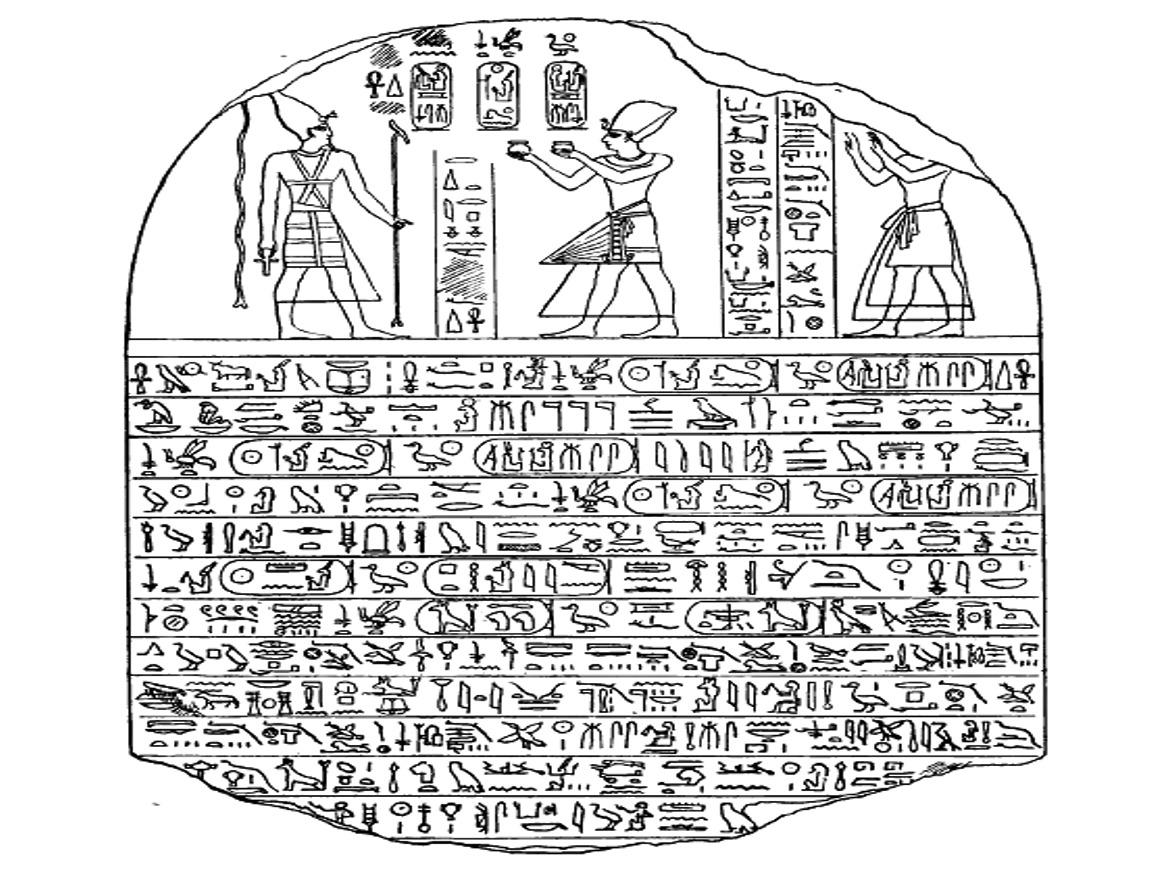
Fig 5. A drawing of the famous "Stele of Four Hundred Years", or "400 Year stele". The stele was erected in the Year 34 of Ramesses II for the worship of the god Seth of Avaris, here cited as a king (Opehtiset Nubti, row 7) lived 400 years earlier. Other kings are cited, too (Ramesses II: top, and rows 1, 3, 4; Seti I: row 6). Found in Tanis.E. A. Wallis Budge (1857-1934) - A History of Egypt, vol III (1902), available not-in-copyright here, p. 157.
Additionally, the Decree of Canopus. It was discovered by Karl Richard Lepsius in 1866. This important monument had been recorded with Hieroglyphic, Demotic, and Greek writings (Bard, 1999). Multiple valuable papyri were written with hieroglyphics showing places' names, festivals' calendars, some local worshiping, and cults (Nicholson, 2006). One of the most important treasures discovered at Tanis is the golden mask of the king Psusennes I the 21st Dynasty, the golden mask of Sheshonq II the 22nd Dynasty, and the golden mask of General Wendjebauendjed. The great funerary piece found at Tanis, and it moved to the Museum of the Fine Arts in France. Additionally, the sphinx statue of king Merenptah; the statue is represented in the form of the human head and the lion body. The statue had made from the stone of rose granite. This sphinx might be brought to Tanis from Tell El Dabaa next to the site to be placed in front of the grand temple (AFAA. 1978).
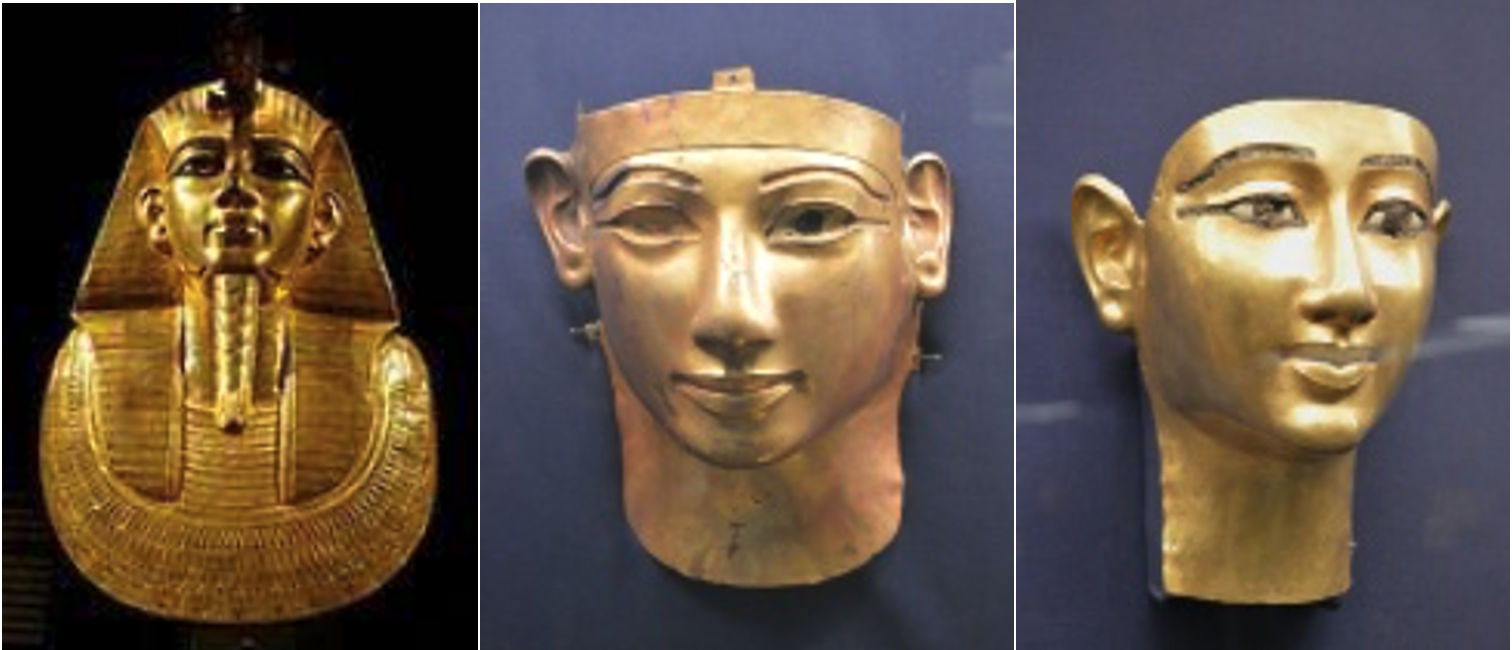
Fig. 6 The golden mask of Psusennes I of 21st Dynasty (Left), the golden mask of Sheshonq II of 22nd Dynasty (Middle), and the golden mask of General Wendjebauendjed (Right). The funerary mask of king Psusennes, Museum of Fine Arts of Valenciennes. 2007 (After. http://flickr.com/photos/laraz/2037806147/)
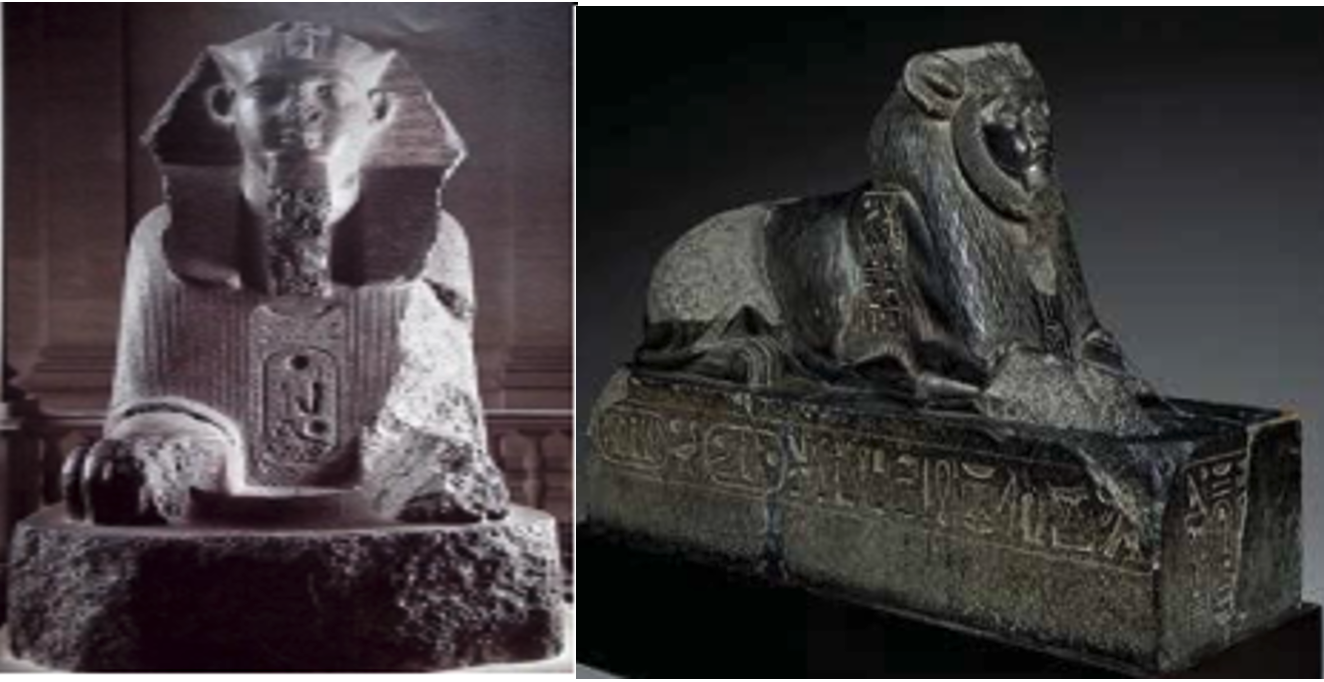
Fig 7. Sphinx statue found at Tanis (Left), Museum of Louvre, Paris.1978 (after. AFAA, Tanis: L’or des pharaons, p.187). Lion sphinx of Amenemhat III (Right). Granodiorite, Twelfth Dynasty, reign of Amenemhat III (ca. 1859– 1813 b.c.). Tanis, found 1863. Egyptian Museum, Cairo ( JE 15210 = CG 394)
The Sphinx statue had been discovered by the French expedition in 1798, and they sent it to the Louvre museum at Paris. Additionally, a lion statue of Amenemhat III found at Tanis in 1863, and it is now in the Egyptian Museum in Cairo. The treasures of Tanis and its valuable monuments moved to the Egyptian Museum in Cairo between 1890-1904 (MFFT, 1991). Large quantities of gold pieces, silver artifacts, and other monumental objects had been found at Tanis. The gold funerary pieces, silver sarcophagi, canopic jars, and other various valuable artifacts; some of these monuments are now exhibited in different museums around the world, and the others are displayed in the room called "the Treasures of Tanis" in the Egyptian Museum in Cairo (Bongioanni, 2003).
Additionally, the great bracelets made from gold are inlaid with precious stones. The pieces are decorated with the Horus's protective eyes. They found in the burial chamber on the mummy of king Sheshonq II, but the inscriptions indicated that they had made for king Sheshonq I, who was mentioned in the Bible (Treasures of Tanis, 2021).
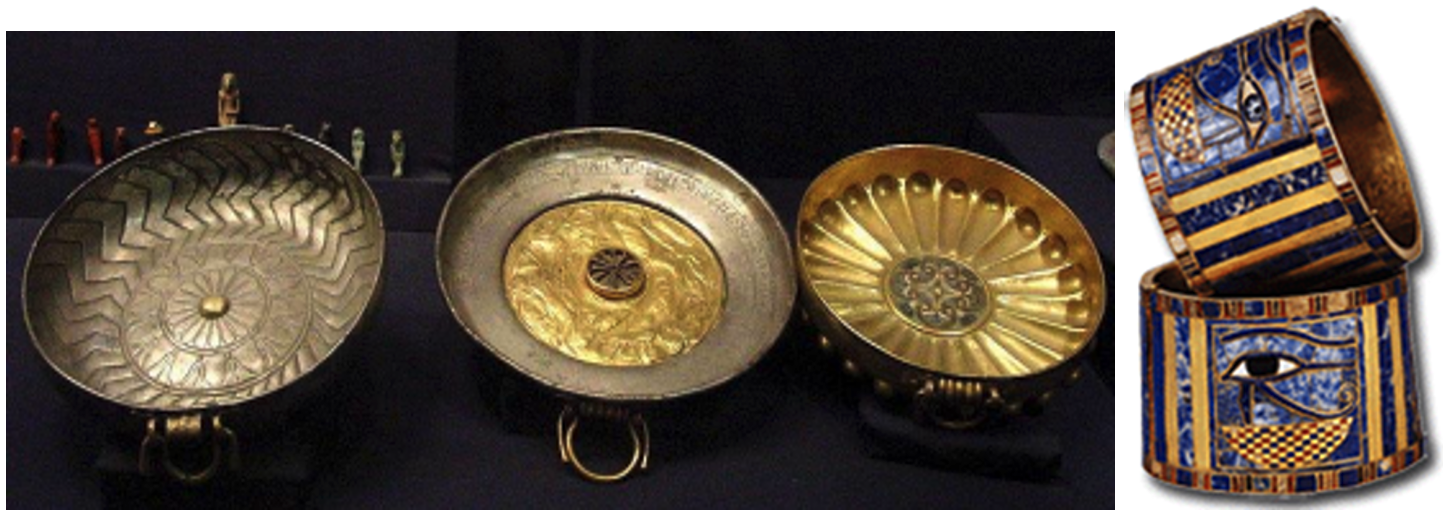
Fig. 8 Treasures of Tanis, 2021. Archive.archaeology.org. Treasures of Tanis - Archaeology Magazine Archive. [online] Available at: <https://archive.archaeology.org/0505/abstracts/tanis.html>
- Results:
- The site needs more attention, multiple scientific studies, and more further excavations to be developed and reopened to visitors. This study threw the light on this great location to be placed on Egypt's Tourism Map and included in the International Tourism Programs.
- The site needs to be developed and provided with infrastructure services and all facilities. Additionally, the archaeological site needs to be secured by setting up a surrounding wall around the monumental area.
- The monumental area needs to be prepared as an open-air museum; the monuments have to be labeled and serialized. Additionally, the location has to be provided with the guidance signs and promoting the region on social media, newspapers, TV news, international cultural communications, and mass media.
- The security system and the site management must be supported. The region is supposed to be provided with a Geographical Information System and modern technologies.
- Local and International cooperation in completing the excavation works for revealing the whole area. As well as encourage the students from the schools and institutes, and invite the archaeologists, researchers, teachers, officials, and executives to visit the location.
- In order to place the region on the tourism map and reopen to the visitors, the area must be provided with accommodation & hospitality services, parking areas, shopping centers, resting places, and other facilities around the monumental area. Additionally, the region has to be included in Local and International Tourism Programs.
- The local community must participate in cultural programs and tourism activities. Tourism generally depends on cultural heritage, historical landmarks, and archaeological sites.
- Tourism development of the region will provide the local people with many different job opportunities, and it supports the national economy. We invite the people who lived beside the archeological area to share in the tourism programs and the other activities.
- The region has many tourist attractions such as; the region's cultural heritage, historical locations, archaeological sites, lakes& rivers, natural landscape, good weather, and others. Therefore, we invite people from all over the world to visit the area, enjoy fine weather, see Egypt's ancient history and our great Civilization.
- Set up 3 or 4 stars hotel in San El Hagar close to the faculty of Archaeology and the monumental area, constructing a new museum provided with all modern technology, a traditional cultural resort on the Lake of Anan or El Seed Club, Equestrian Club, fishing& hunting center, location for watching the different kinds of birds and natural life.
- Set up a highway to connect the region with the Suez Canal area and big cities such as; Ismailia, Port Said, Cairo, Qantara, El Arish, and Mansoura. The tourists who stayed in these cities can to make one day tour to visit the region.
- Conclusion:
According to the history of the region, the site of Tanis had witnessed the historical events of the different periods from the Old Kingdom until the end of the Greaco-Roman period. The region reached the highest of its glory during the 21st-22nd Dynasties. The city became the capital of Egypt during that period. The site played an essential role during the New Kingdom, and it became an important location during the reign of King Ramesses II. Moreover, king Seti I (Ramesses II's father) visited the city when he was one of the generals in the Army of Hourmoheb. The location is the great temple dedicated to Amun and other smaller temples concerned to Mut and Khonsu. The temple included various pylons and courts. It also included many statues, numerous obelisks, the sacred lake, and water wells that had been used for different daily purposes. Additionally, the royal cemetery of Tanis included the tombs of the great kings, queens, some princes, and military Generals who belonged to the 21st-22nd Dynasty. The city was later abandoned, and it was destroyed by either the storm earthquake or the successive attack on the city as it was a protection point on the eastern border of Egypt during the different historical times.
Ramesses II had various obelisks; they were originally erected in the temple of Tanis; some of which were transported to Cairo to decorate the capital Egypt, and the others moved to decorate the capital cities around the world. Additionally, many monumental objects had been taken from Tanis, and they are now displayed in the different museums in the world. However, the site was initially excavated by Auguste Mariette, Petrie was later excavated in the location during the 19th century AD. He could to point out the whole site of Tanis and conduct the layout plan of the temple. Pierre Montet discovered the area of the royal tombs that dated back to the 21st-22nd Dynasties, and he proved that Tanis was never the city of Ramesses II during the New Kingdom next to the site. The ancient city of Tanis is now ruined; the main temple was fully destroyed, and the fortified enclosure wall had been disappeared. The site is now full of the scattered monumental blocks dated back to the different historical periods from the Old Kingdom to the end of the Greco-Roman period. Additionally, the valuable golden pieces and unique monumental objects are now displayed in the room of the Treasures of Tanis in the Egyptian Museum in Cairo.
Two water wells were discovered in the temple, they had been used a Nilometer to measure the highest level of water in the Nile in the season of flooding, and it was also used for other daily life purposes. Additionally, the sacred lake in the site was considered the second-largest sacred lake in Egypt after the sacred lake of the Karnak Temple at Luxor. The lake had been used by the priests for various ritual activities. However, the most important monuments found in the site related to Ramesses II, some other monuments belonged to the previous period of the Old and Middle Kingdoms also discovered in the location. As a matter of fact, the monuments of Ramesses II had been later brought from his residence city (Pi-Ramesses) after the decline of Avaris, appearing the new capital city of Tanis. Additionally, the city had an important location, strategic point, commercial center, and defensive station on the eastern border of Egypt during the ancient historical periods.
References:
- Abd Elfattah, N. S. ed. Tanis, History and Excavations
- AFAA. (1987), Tanis: L’or des pharaons.,Ministère des Affaires Étrangères, Paris.
- Bard, Kathryn A., ed. (1999). Encyclopedia of the Archaeology of Ancient Egypt. London: Routledge. ISBN 0-203-98283-5.
- Bard. A.K. (1999), Encyclopedia of the Archaeology of Ancient Egypt, New York.
- Bongioanni. A. & Croce, M. S (2003), The Treasures of Ancient Egypt, New York.
- Bossone, Andrew. 'Sacred Lake’ found in Delta. Egypt Independent, October 15, 2009.
- Breasted, James Henry (1906). Ancient records of Egypt, vol III. Chicago: The University of Chicago Press. pp. 226–228.
- Breasted, James Henry (1906). Ancient records of Egypt, vol III. Chicago: The University of Chicago Press. pp. 226–228.
- Budge. E.A. (2011), Notes for travelers in Egypt, New York.
- Dodson, Aidan; Hilton, Dyan (2004). The Complete Royal Families of Ancient Egypt. Thames & Hudson. p. 162.
- Egypt Travel Experts, 2021. The Tombs Of tanis | Tombs Of San El-Hagar - AskAladdin. [online] Available at: <https://www.ask-aladdin.com/egypt-sites/ancient-egyptian-sites/san-el-hager/> [Accessed 14 May 2021].
- Gardiner, Alan (1961). Egypt of the Pharaohs: an introduction. Oxford University Press. p. 165
- Grimal, Nicolas (1992). A History of Ancient Egypt. Oxford: Blackwell Books. p. 185. ISBN 978-0-631-17472-1.
- Hayes, William C. (1971). "Egypt: from the death of Ammenemes III to Seqenenre II". In Edwards, I.E.S. (ed.). The Cambridge Ancient History (2nd ed.), vol. II, part 1. Cambridge University Press. p. 57. ISBN 0-521-077915.
- Lost City of Tanis, 2021. [online] Available at: <https://www.nationalgeographic.com/history/article/tanis-egypt#:~:text=The%20city%20of%20Tanis%20is,with%20the%20treasures%20of%20Tutankhamun.> [Accessed 14 May 2021].
- Marsha Hill, Later Life of Middle Kingdom Monuments Interrogating Tanis. The Metropolitan Museum of Art, New York Distributed by Yale University Press, New Haven and London.
- MFFT. (1991),"Report: Tanis, les Pharaons de l'incertitude, fouilles récentes dans la Thèbes du Nord", Paris.
- Nicholson. P.T. (2006), Ancient Egyptian Materials and Technology, Cambridge. Oblath. M.D. (2004), The Exodus Itinerary Sites: Their Locations from the Perspective of the biblical sources, New York.
- Obelisks in Tanis Ruins, 2021. [online] Available at: <http://www.obelisks.org/en/tanis.htm> [Accessed 14 May 2021].
- Porter, B.; Moss, R. (1968). Topographical Bibliography of Ancient Egyptian Hieroglyphic Texts, Reliefs, and Paintings, Part IV: Lower and Middle Egypt. Oxford: Griffith Institute, Ashmolean Museum. p. 23.
- Rowe. A. (1941), "Tanis, Its History and Biblical Associations", in BSAA 34, Alexandria.
- San el-Hagar- Tanis, 2021. Egyptian Monuments. 2021. San el-Hagar (Tanis). [online] Available at: <https://egyptsites.wordpress.com/2009/03/03/san-el-hagar-tanis/> [Accessed 14 May 2021].
- SFFT, site: http://www.tanis-sanelhagar.fr/index.php/historique-des-fouilles.
- SFFT, site: http://www.tanis-sanelhagar.fr/index.php/resultats-recents/2013.
- Shaw. I. (2003), Exploring Ancient Egypt, Oxford.
- Smith. W. (1854), Dictionary of Greek and Roman Geography, Ed.volume 2, London.
- Snape, Steven (2014). The Complete Cities of Ancient Egypt. Thames & Hudson. p. 335. ISBN 978-0-500-77240-9.
- Tanis- San El-Hagar in Egypt, 2021. [online] Available at: <http://www.touregypt.net/featurestories/tanis.htm> [Accessed 14 May 2021].
- the American Heritage Dictionary of the English Language (5th ed.). Boston: Houghton Mifflin Harcourt. Retrieved 21 September 2019.
- Treasures of Tanis, 2021. Archive.archaeology.org. Treasures of Tanis - Archaeology Magazine Archive. [online] Available at: <https://archive.archaeology.org/0505/abstracts/tanis.html> [Accessed 14 May 2021].
- Verner. M. (2013), Tanis: The Thebes of the North in Temple of the World: Sanctuaries, Cults, and Mysteries of Ancient Egypt, Cairo.
- Wallis Budge E. A. (1857-1934) - A History of Egypt, vol III (1902).
- Wallis Budge, E. A. (1902). An History of Egypt, part III. New York: Oxford University Press. pp. 156–161.
